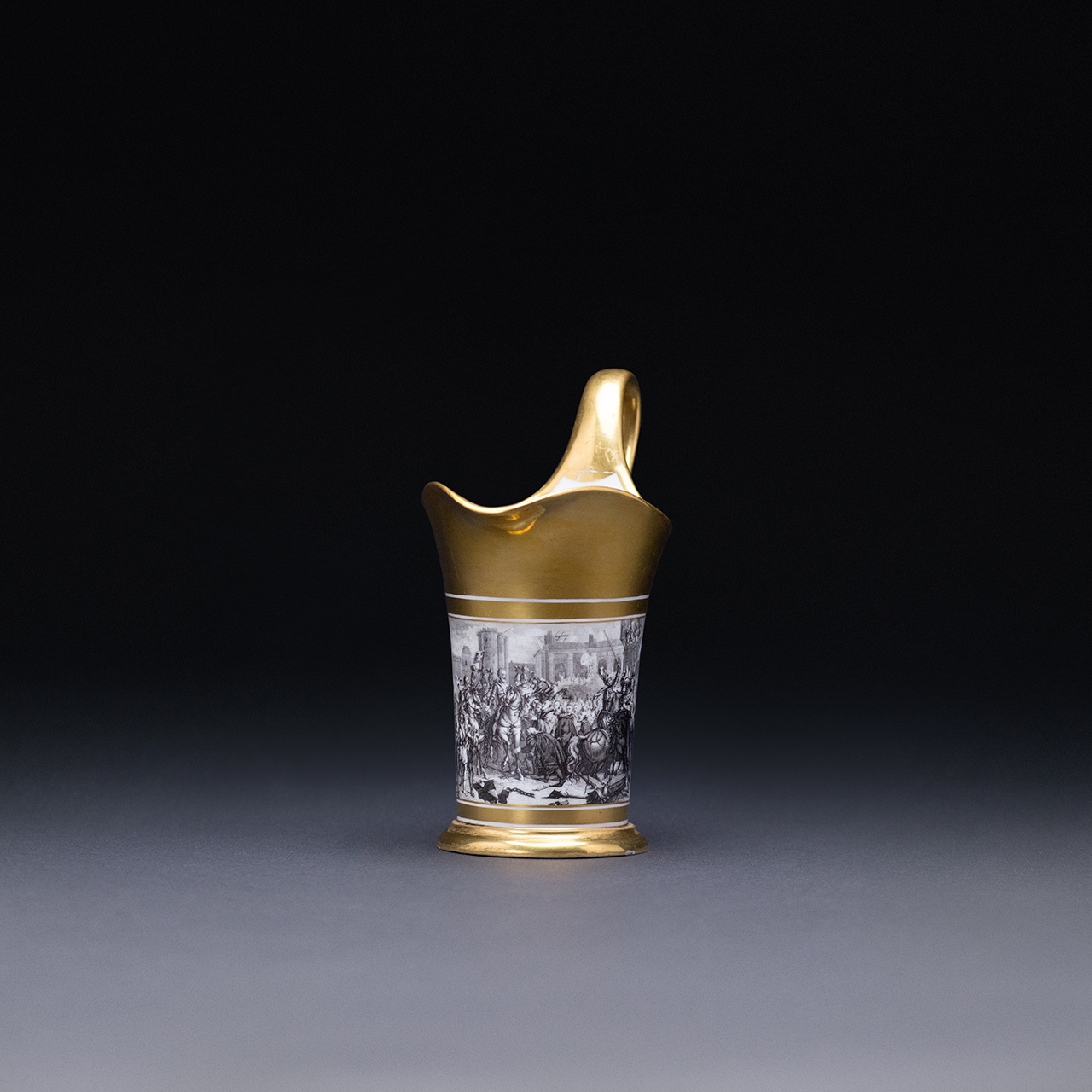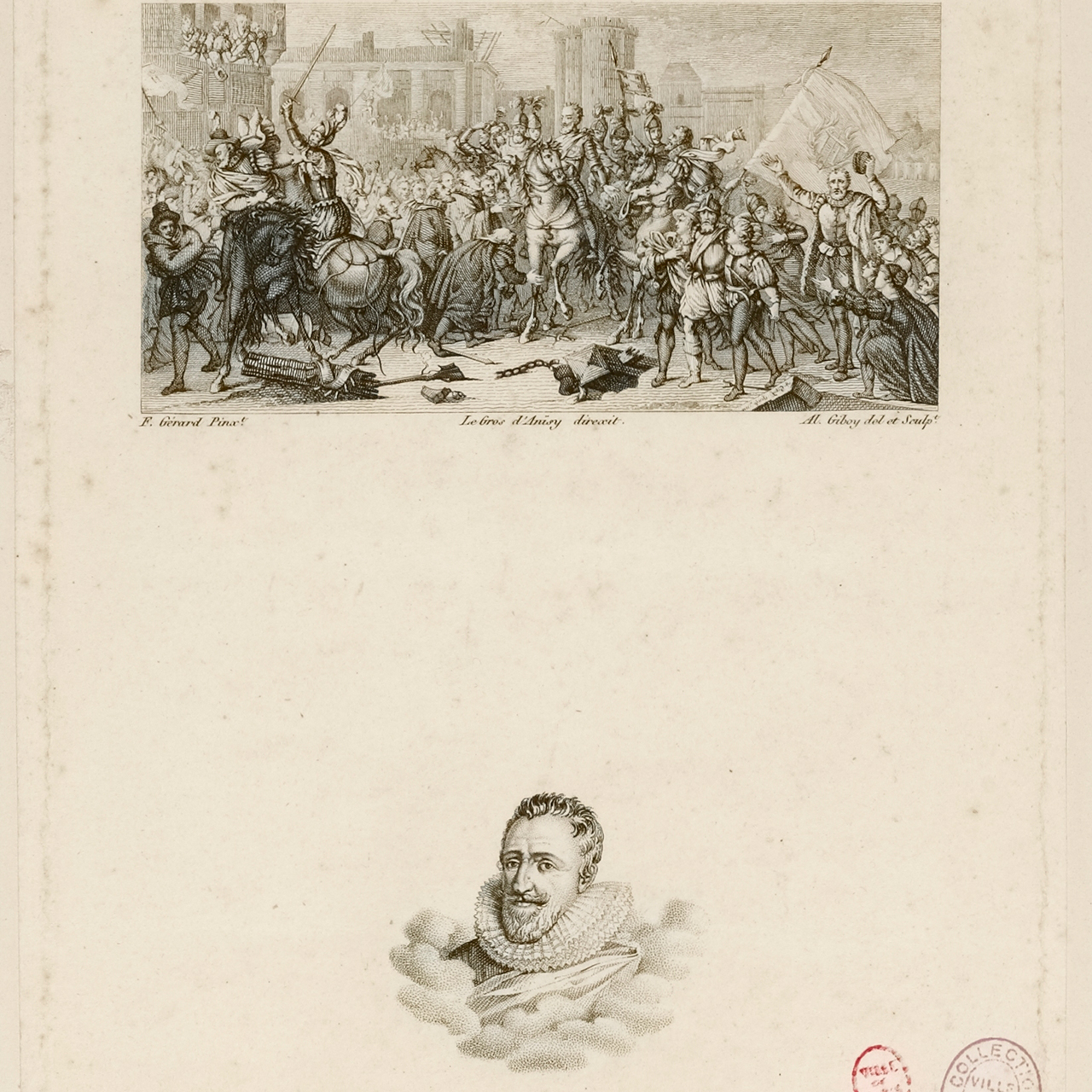The "cornet" shaped cream pot (created in 1800), the cup with a curved handle (shape designed by Bodson in 1815), each with printed decoration representing the entrance of Henri IV in Paris, on March 22nd, 1594, from an engraving by Alexandre Giboy, itself based on the famous painting by Gérard kept at the Versailles Palace. The scene stands out against a golden background.
Engravings signed "A. Giboy" in the lower left corner.
Good general condition, a crack at the level of the handle of the cream pot.
The mug is damaged.
Royal Manufacture of Sèvres, Louis XVIII period (after 1818).
Marks with a blue stamp with the King's number (1814-1824).
Intaglio marks of dough making dated 1815 (milk jug) and 1816 (cup).
H. 14 x L. 12.5 cm. Cup: H. 7 cm.
Possibly isolated pieces (unless it is a cabaret?) created to celebrate the Return of the Bourbons to the throne of France, particularly following the inauguration of the equestrian statue of Henri IV on the Pont-Neuf in Paris on August 25, 1818. It was indeed on this occasion that the draftsman and engraver Alexandre Giboy made an etching entitled "petite copie de l'entrée d'Henri IV à Paris, d'après Gérard, avec le portrait d'Henri lV au bas", published in 1818 (ill. 1), a print of which can be found in the Carnavalet Museum (Bibliographie de la France, Au Cercle de la Librairie, year 1818, part Engravings, p. 107: "Petite Copie de l'Entrée d'Henri IV à Paris, d'après Gérard ; avec le portrait d'Henri lV, au bas, par A. Giboy. Paris, chez A. Giboy, rue du Cadran, n. 9" (ill. 2).)
A litron cup and its saucer, with the same scene on the cup and the portrait of Henri IV on the saucer, according to Giboy's entire engraving, these dated from the Charles X period (1824-1830), sold at Drouot Richelieu, Beaussant-Lefèvre, 7 June 2013, lot 115 (ill. 3).
Initiated in the 18th century, "decoration by printing" in Sèvres is applied to porcelain from a metal plate engraved with a chisel in intaglio. In 1807 Alexandre Brongniart asked François Gonord, who in 1805 had presented to the cabinet of the Council of Ministers a cup and saucer decorated with motifs printed by his process, to provide the Manufacture with some work. These included a few decorated cups with the calendar of the year 1810, landscapes and portraits, as well as a map of France printed in the basin of plates, one of which for the Emperor is kept at the Fondation Napoléon (ill. 4). As early as 1806, Brongniart entrusted a fund-bearer from the Manufacture, François Legros d'Anizy, with the task of running a porcelain printing workshop. In association with Stone and Coquerel, Legros d'Anizy carried out a great deal of research outside the manufactory. It is probably on the basis of his experience that one of the gilders of Sèvres, Charles Louis Constans, directed the workshop towards its final destination, in 1817, that of printing repetitive and most often gilded ornaments, such as friezes for example.
Our ensemble, executed only and at least one year later, bears witness to these very first achievements of transfer by printing carried out in Sèvres under the Restauration.











